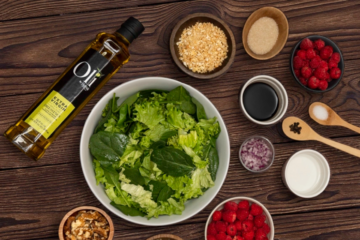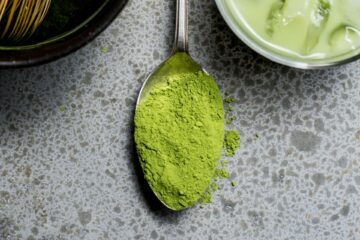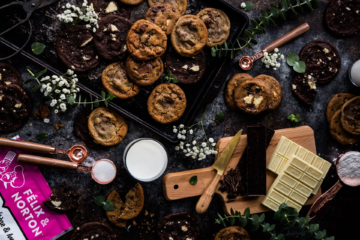Everyone has heard of heavy cream and whipping cream – you may have even used them once or twice in your recipes. However, it’s possible that you might not have any experience with table cream because they aren’t popular, leaving you feeling a little stumped, more so if you don’t have anything of the sort in your pantry.
So, what is table cream, and what is it used for? Well, your confusion ends here. This article contains everything you need to know about table cream. What it is, what table cream is used for, and possible substitutes you can use. So, let’s dive right in!
What is table cream, and what is it used for?
Table cream is a type of cream that contains about 18-30% milk fat. It is also called light cream, single cream, or coffee cream. Generally, it is known to have 18% fat but can contain anything from 18-to 30%. Table cream has a thick consistency and a gentle flavor, making it a go-to for many chefs in specific recipes.
However, many people think that the word “light” is related to the health factor, but it’s not true. This is because the cream still has enough milk fat content. So, although it is lighter than the whipping cream, it’s not enough for people who want to restrict their fat intake.
Due to its thickness and unique flavor, table cream is very versatile. Table cream is used to produce mixed cream (cream and alcohol). This is because heavy creams affect the stomach when mixed with alcohol.
In addition, you can add it to your coffee and make a sauce because it can thicken the consistency of your recipe. It can also be served with cereals or fruits and used as a substitute for other creams to give your meal a different flavor. First, however, it’s advisable to understand the correct usage of the table cream.
What is table cream made out of?
Because it is so light, it doesn’t contain much fat.
A table cream typically consists of 18-30% milk fat. However, other types of milk have a higher milk fat percentage that’s up to 55%, and even up to 55%.
What is the best table cream for coffee – a list of our best
We recommend that you use table creams in coffee because its protein softens and reduces the coffee’s bitterness. The protein in the milk binds with polyphenolic compounds, such as tannins.
Although tannins are good for the body, they have a taste that detracts from the coffee, but once the milk binds with it, the flavor is covered up. Now that you know the importance of table cream in the coffee, here’s a list of the best table cream flavors that are recommended for you:
- French Vanilla
- Cafe Mocha
- Italian Sweet Cream
- Hazelnut
- Caramel Macchiato
- Creme Brulee
- White Chocolate
- Butter Pecan
- Salted Caramel Mocha
- Pumpkin Spice
What are some table cream substitutes – The best we recommend
As we mentioned earlier, table cream adds richness and flavor to many foods. However, there are situations in which table creams won’t be available, and you might be confused about what to do.
If you ever find yourself in that situation, that’s not the end of whatever you want to prepare. You don’t have to worry because there are other things you can use as substitutes for table cream, and some of them are:
- Butter and milk
- Oil and dairy-free milk
- Full-fat coconut cream
- Evaporated milk
- Brown rice and milk
- Cashew cream
- Pureed tofu
All the milk and creams listed above can be used in place of table cream and still get a good result with anything you prepare.
You can even prepare a homemade table cream by yourself. You need to melt ¼ cup unsalted butter and slowly whisk in ¾ cup whole milk. This is the equivalent of 1 cup of heavy cream and can be used in place of heavy cream in most recipes.
What is the difference between table cream and whipping cream?
The main difference between the whipping cream and the table cream is the milk fat content.
Whipping cream contains 30-36% milk fat. Light cream, also called “coffee cream” or “table cream” has between 18-30% milk fat.
In addition, the whipping cream explained here is also known as light whipping cream because there’s another whipping cream known as the heavy whipping cream.
What is the difference between table cream and heavy whipping cream?
Heavy whipping cream has at least 36% milk fat content. This means that the milk fat content of heavy whipping cream can be more than 36%, while table cream has between 18-30% fat, as stated earlier.
That’s why it’s advisable to reduce the use and intake of heavy whipping cream because of the high-fat content. It’s recommended that table cream be used instead of heavy whipping cream when making a mixed cream.
As you read easier, it is because of the impact of the heavy whipping cream on the stomach when mixed with alcohol.
Read also: Can You Use Heavy Whipping Cream After Expiration Date?
What is the difference between table cream and sour cream?
Table cream and sour cream are widely perceived to be the same thing. Most people even mistake them for each other. However, attention should be paid to essential differences between the two creams.
Here are some of the differences between table cream and sour cream:
Firstly, table cream and sour cream don’t have the same milk fat content. Table cream has between 18-30% milk fat content, while sour cream has about 20% milk fat content.
Secondly, table cream is always made without thickeners and stabilizers, while sour cream consists of stabilizers and thickeners. Also, the flavor of table cream is a bit lighter or milder when compared to sour cream.
Lastly, table cream is mainly made with butter flavor, and it’s sweeter than sour cream. But, as the name implies, sour cream is always sour. We believe that the acidity of sour cream makes it similar to Greek yogurt.





